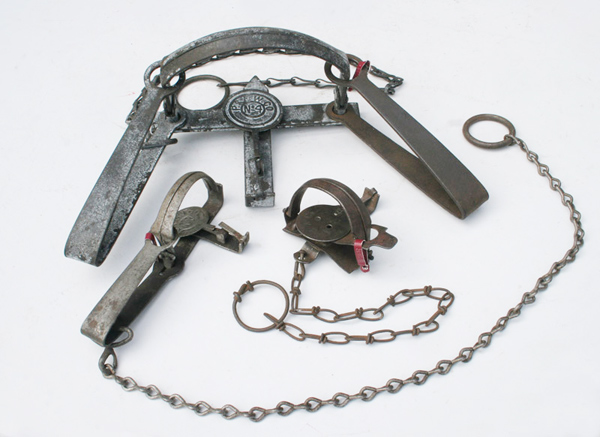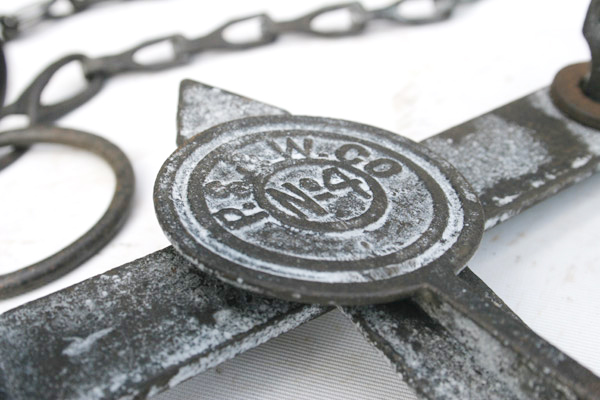 Antique Traps: Original P.S. Traps
Antique Traps: Original P.S. Traps
By Tom Parr

Peck, Smith Manufacturing was one of the first companies in America to mass-produce steel traps, beginning roughly five years before Oneida Community entered the business.
The company, chartered in 1848, made metalworking equipment and also a line of traps in sizes No. 1, No. 1-1/2, and No. 2. The cast pans featured P.S. & Co. and the size number in raised letters.
By 1870, P.S. & Co. had merged with two other Connecticut firms, S. Stow Manufacturing and Roys and Wilcox, to form the renamed Peck, Stow and Wilcox Co., which offered the P. S. & W line of traps, described in an 1878 catalog as “Oneida Pattern Steel Traps.” They were made in six sizes from No. 0 underspring up to a No. 4 double longspring. By 1890, the cast pans featured P. S. & W. Co. in a broad circular depression with the size number in the center.
In 1904, the company began making lighter, less expensive Hector traps, also offered in six sizes from No. 0 to No. 4. The traps included a patented feature, a small bulge or lobe on the outer edge near the spring that allowed both jaws to lie flat when the trap was set with the spring turned to the right.

Throughout the early 20th century, the company continued to add new longspring, single and double underspring traps to its line. A few of the single undersprings came with elongated pintles on the ends of the cast jaws farthest from the spring; these pins or rods made the trap easier to set.
A line of three small longsprings, identical to the Hector, were stamped Victoria specifically for the Canadian trade. Oneida Community countered with a trap stamped Niagara Special.
A second line of longspring traps, also patterned on the Hector, was called the Good Luck. Like the Victoria, the Good Luck was only produced in No. 0, No. 1, and No. 1-1/2 sizes.
Unlike the Victoria, the Good Luck trap had a swastika design cut in the center of the pan. At the time, the symbol was considered a Native American “good luck” sign, not associated in any way with Adolf Hitler and the German Nazis movement.
P.S. & W. Co. also made special order traps for bigger customers, including the Rev-O-Noc for Hibbert, Spencer, Bartlett & Co, a wholesale hardware firm headquartered in Chicago. Rev-O-Noc was Conover spelled backwards, apparently done to honor a man named Conover who had served for many years as the company’s sales manager.
P.S. & W. Co. stopped making steel traps in 1918. As for collector value, Rev-O-Noc, Victoria, and Good Luck traps in good condition may bring up to $200 each. However, the standard P.S. and P.S. & W. traps, even though equally antique, are not as prized as better-known Newhouse traps from the same era.
* * *
For information on this and other
collectible antique traps, contact:
Tom Parr, the North American Trap
Collectors Association, P.O. Box 94,
Galloway, OH 43119; (614) 878-6011.